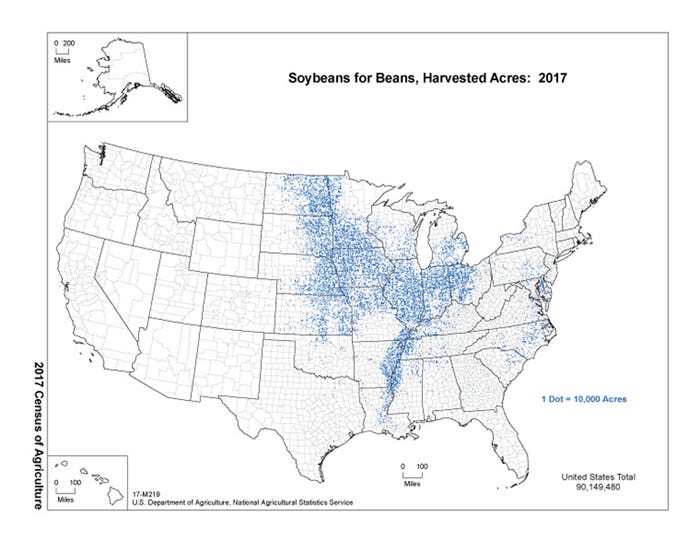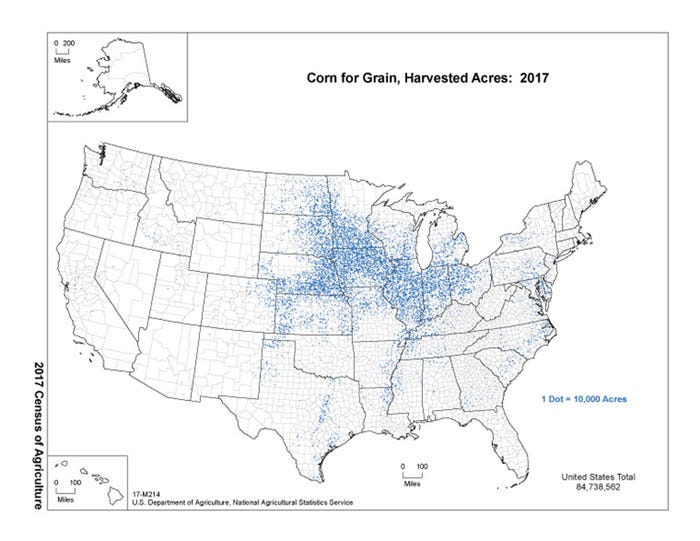
The 2017 Census of Agriculture of Agriculture was released April 11, offering a treasure trove of data for those willing to do a bit of excavating.
“We can all use the Census to tell the tremendous story of U.S. agriculture and how it is changing,” said USDA Secretary Sonny Perdue. “As a data-driven organization, we are eager to dig in to this wealth of information to advance our goals of supporting farmers and ranchers, facilitating rural prosperity, and strengthening stewardship of private lands efficiently, effectively, and with integrity.”
NASS Administrator Hubert Hamer adds that the latest Census is presented with the intention to make it easier to delve into the data.
“We are pleased to make the results available in many online formats including a new data query interface, as well as traditional data tables,” he said.
The latest Census helps quantify some key trends since the last comprehensive report was released in 2012. For example, farms are indeed getting larger, on average, as the total number of farmers decrease. There are now 2.04 million U.S. farms and ranches – down 3.2% from 2012 – with the average farm size increasing 1.6% to 441 acres during that time.
Larger farms continue to capture the lion’s share of production, with the top 5% of farms creating 75% of all sales, and the largest 85,127 farms (2,000+ acres) account for 58% of total U.S. farmland. More troubling, only 43.6% of all operations had positive net cash farm income in 2017.
The latest Census also tracks demographic information, including first-time data on military status. To that point, 370,619 producers have served in the military, which is 11% of the total. And the farming population continues to get older, with the average age now reaching 57.5 – up another 1.2 years from 2012.
Farmer demographics are not monolithic by a long stretch, as the Census also notes. More than 300,000 producers are under the age of 35, and one out of every four producers has less than 10 years of experience (with an average age of 46.3). And more than a third of all producers are female, with 56% of all farms including at least one female decision-maker.
Various conservation and renewable energy practices also continue to rise, according to the Census. For example, no-till acres increased by 8.3% since the 2012 Census with a new footprint of 104.452 million acres. Acres where cover crops were implemented increased nearly 50% over the same period to reach 15.391 million acres. And the number of farm operations using solar panels, wind turbines, methane digesters and geothermal systems more than doubled in the past five years to 133,176.
The Census website has a bevy of searchable content, including a series of atlas maps that can be accessed here. Users can also access a “quick stats” section here that allows them to query Census data results at the county, state and national level.
Per the USDA website: “NASS sends questionnaires to nearly 3 million potential U.S. farms and ranches. Nearly 25% of those who responded did so online. Conducted since 1997 by USDA NASS – the federal statistical agency responsible for producing official data about U.S. agriculture – it remains the only source of comprehensive agricultural data for every state and county in the nation and is invaluable for planning the future.”
For more information, visit www.nass.usda.gov.




About the Author(s)
You May Also Like






